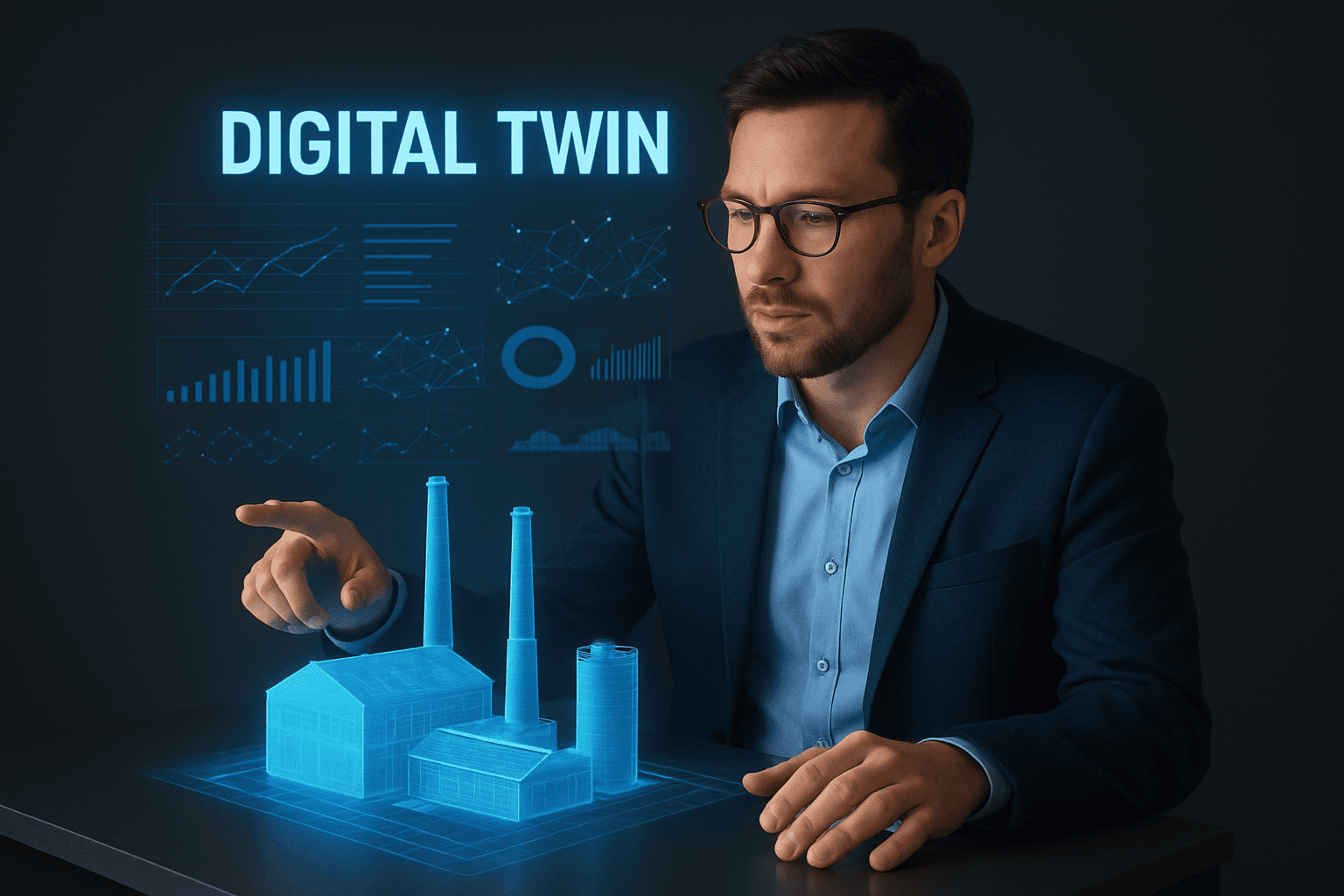Can you image having a virtual clone of something, such as a car, a building, or even a city, that you could test, modify, and monitor without physically touching the original? That is the concept of a Digital Twin.
Sounds sci-fi? It’s here now.
So, what exactly is a Digital Twin?
In the simplest terms,
A digital twin is a digital replica that mirrors real-world outcomes. It is the digital reporting of a physical object/system that tracks its behavior, operation, and state, enabled by a network of sensors, data, and modelling.
You can think about a digital twin in the following way:
It’s like The Sims, but instead of controlling a pixelated character who you let pee on the floor, you are controlling the digital version of a machine, jet engine, smart factory, etc.
Real-Life Example
Let’s say you are making a car. You can either make the car itself and hope it works, or you could make a twin of that car—and then you could test its performance on a variety of roads, test how the engine performs with the heat, or test how the brakes react when it rains! And all before a single part is manufactured.
Pretty cool, right?
How Does It Work?
Digital twins emerge through a combination of:
- IoT Sensors: These sense data from the real object (temperature, speed, pressure, etc.).
- AI & Machine Learning: Able to forecast outcomes and recommend changes
- 3D Models or Simulations: Allow you to see the twin while it’s running.
- Cloud Computing: Allows you to host and manage all this data in real time.
Basically, it’s like the physical and digital world are talking — constantly.
Where Are Digital Twins Used?
Now, this is where it gets exciting. Digital twins are not just some nerdy lab experiments anymore —they’re being used everywhere:
Automotive
Automakers like Tesla are using digital twins to do software updates on cars before they send them to your car.
Healthcare
Medicine is trying things like digital twins of human organs. Just imagine doctors testing their treatments on digital twins of your heart before doing anything risky.
Manufacturing
Factories use them to run models of their machines to predict when they could break — minimizing downtime and maximizing savings.
Smart Cities
Full-scale cities (yes, like actually) are being twinned to model traffic, pollution, energy use — even people movement in places during events.
Benefits of Digital Twins
- Saves Time and Money: Consider testing and modifying your product before putting money into real life builds.
- Predictive Maintenance: Mitigate issues before they occur.
- Better Choices: Real-time information leads to smarter choices.
- Sustainability: Able to optimize energy, eliminate waste, and green the world.
But Wait… Is There a Downside?
Like any strong technology, digital twins have some challenges:
- Privacy of Data: Particularly in healthcare or smart cities.
- Cost of Purchase: Sensors, software, cloud configurations will not be cheap.
- Complexity: You will need a trained team to create and maintain these systems.
However, most often, the advantages of digital twins tend to outweigh the disadvantages, particularly for large scale industries.
Final Thoughts: Digital Twins are Not Just Another Buzzword
They are quietly changing the way industries do business and action are allowing us to build smarter, safer, and sustainable systems.
In some aspect we are becoming immersed in a world where the line between real and digital everyday is becoming more hazy. However, in this haze we are illuminated.
You also like : Quantum Computing for Beginners: The Next Big Thing in Tech


4 thoughts on “What is Digital Twins Technology? The Future is Simulated”